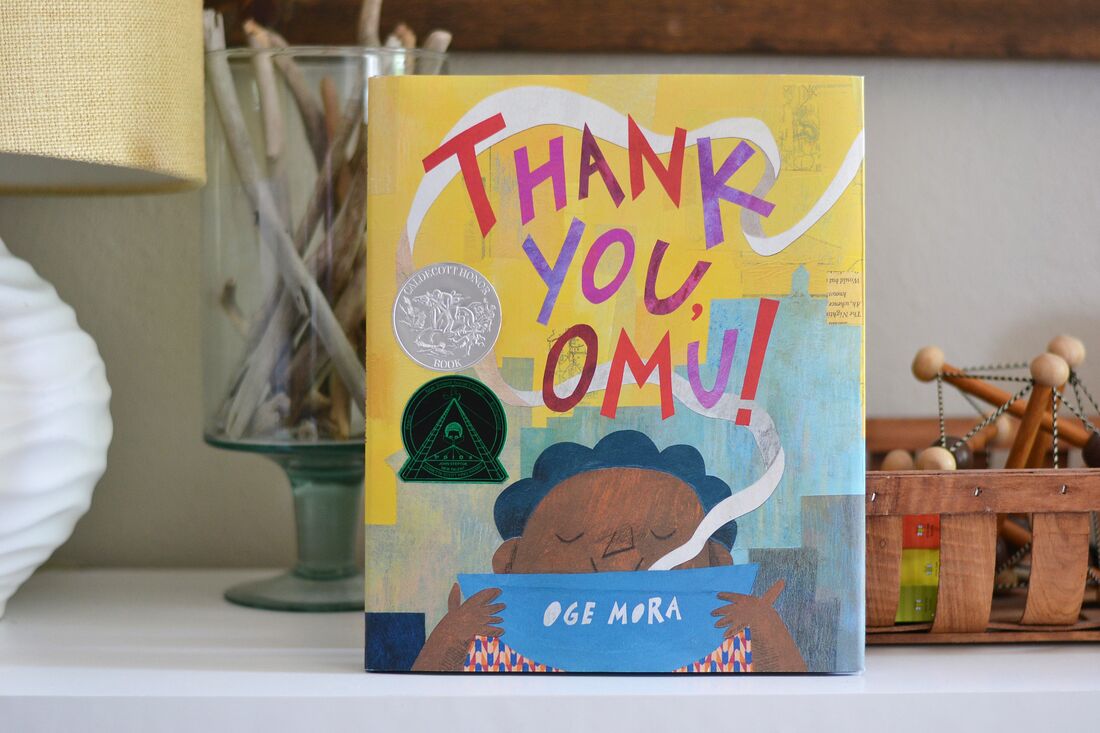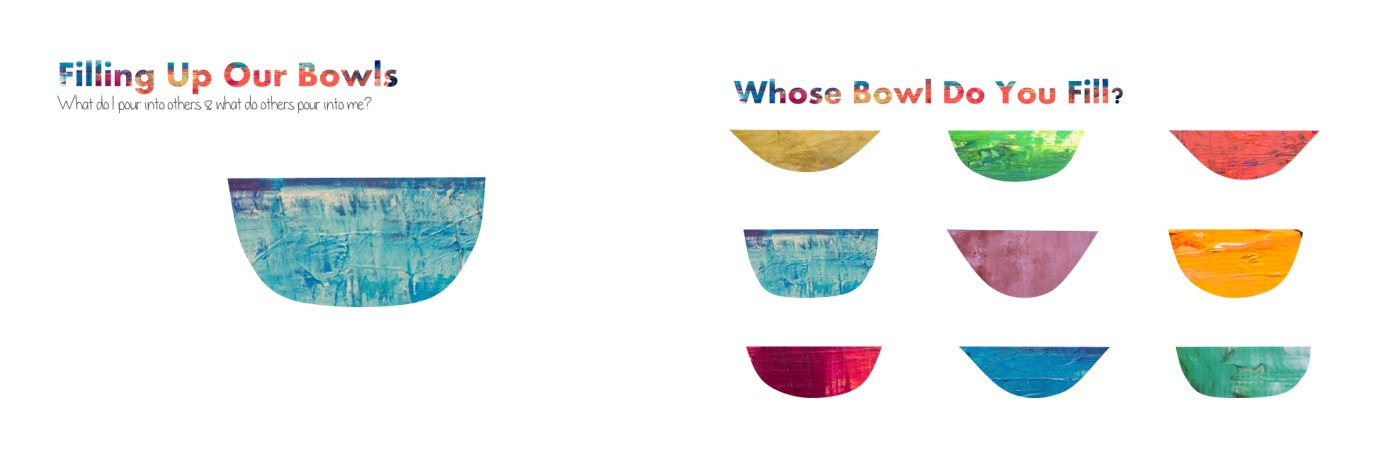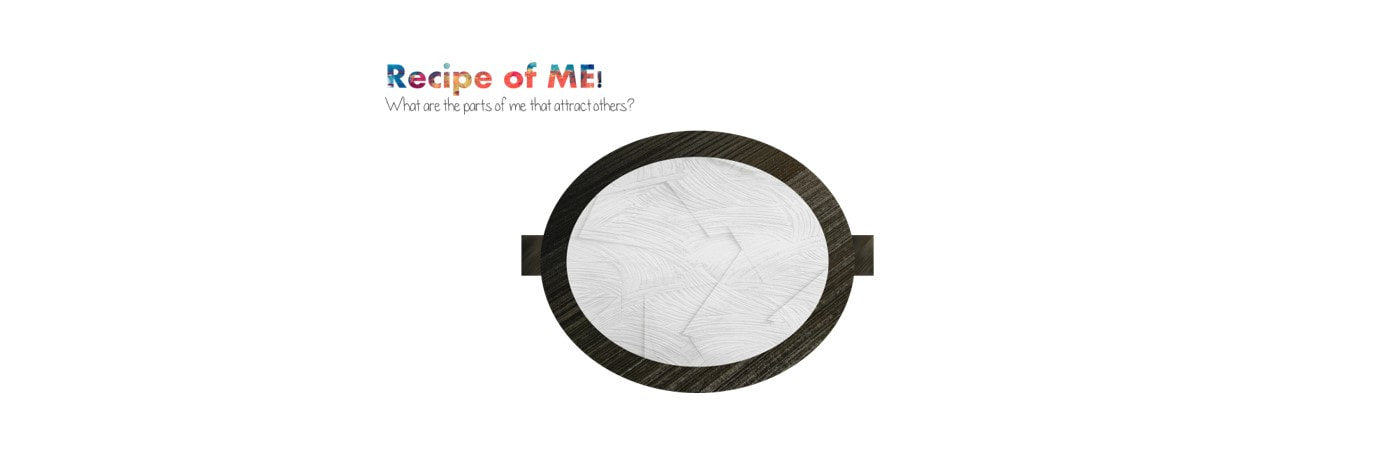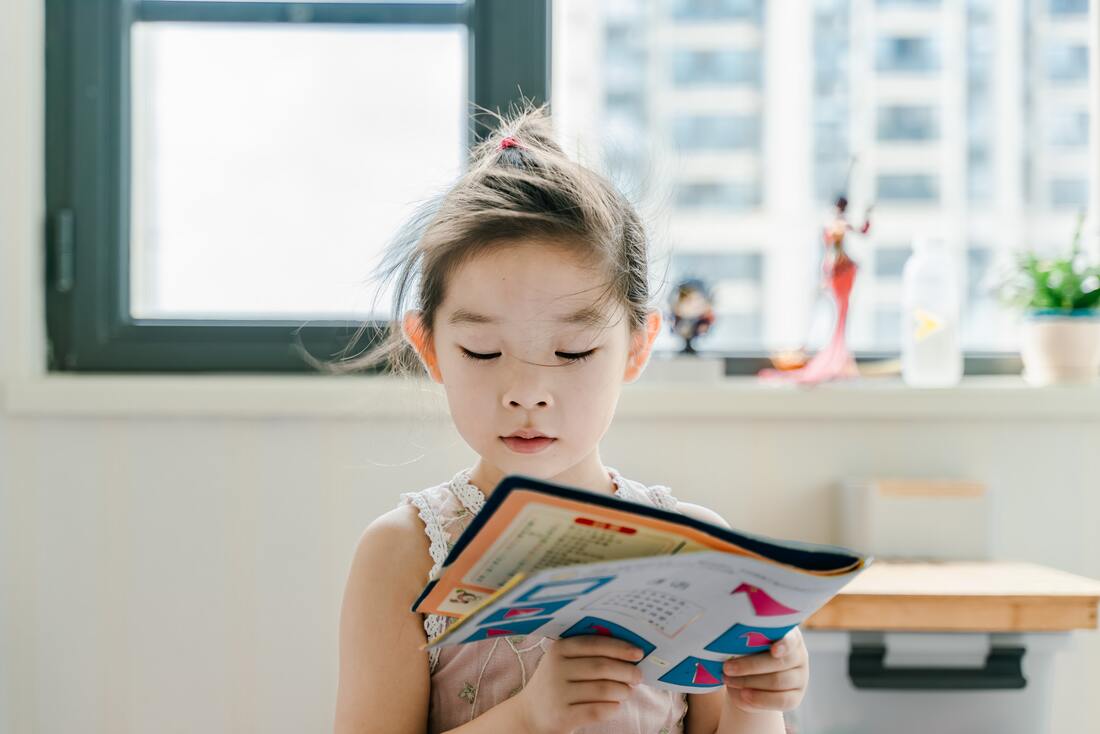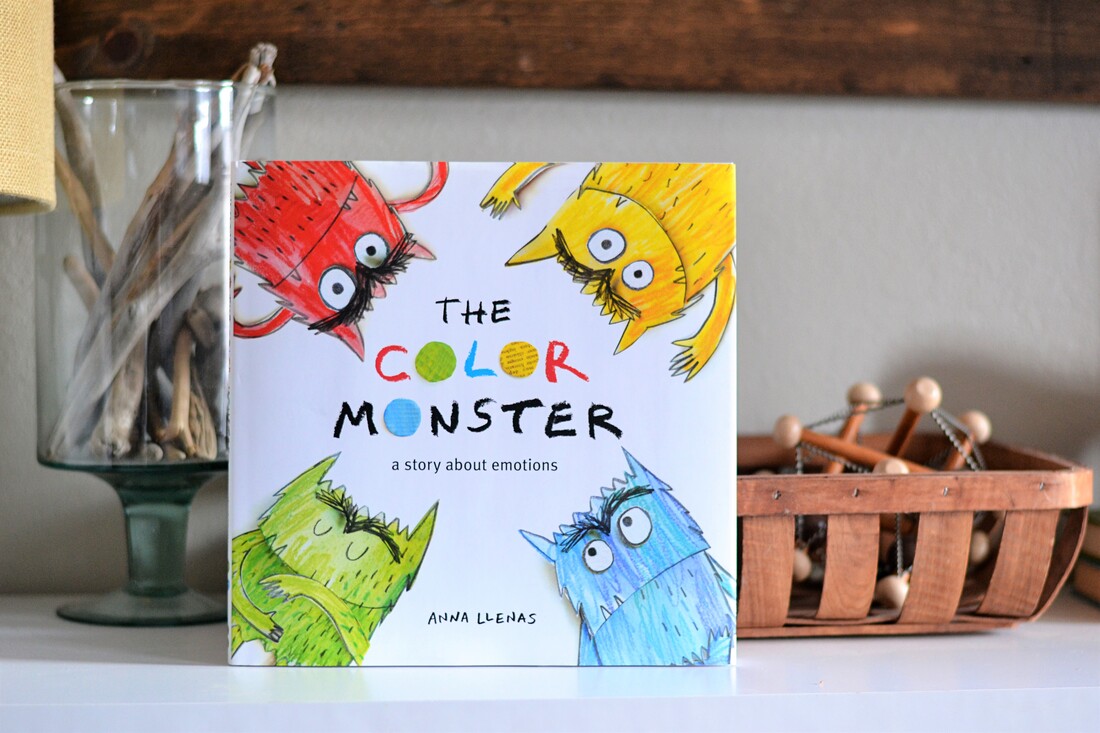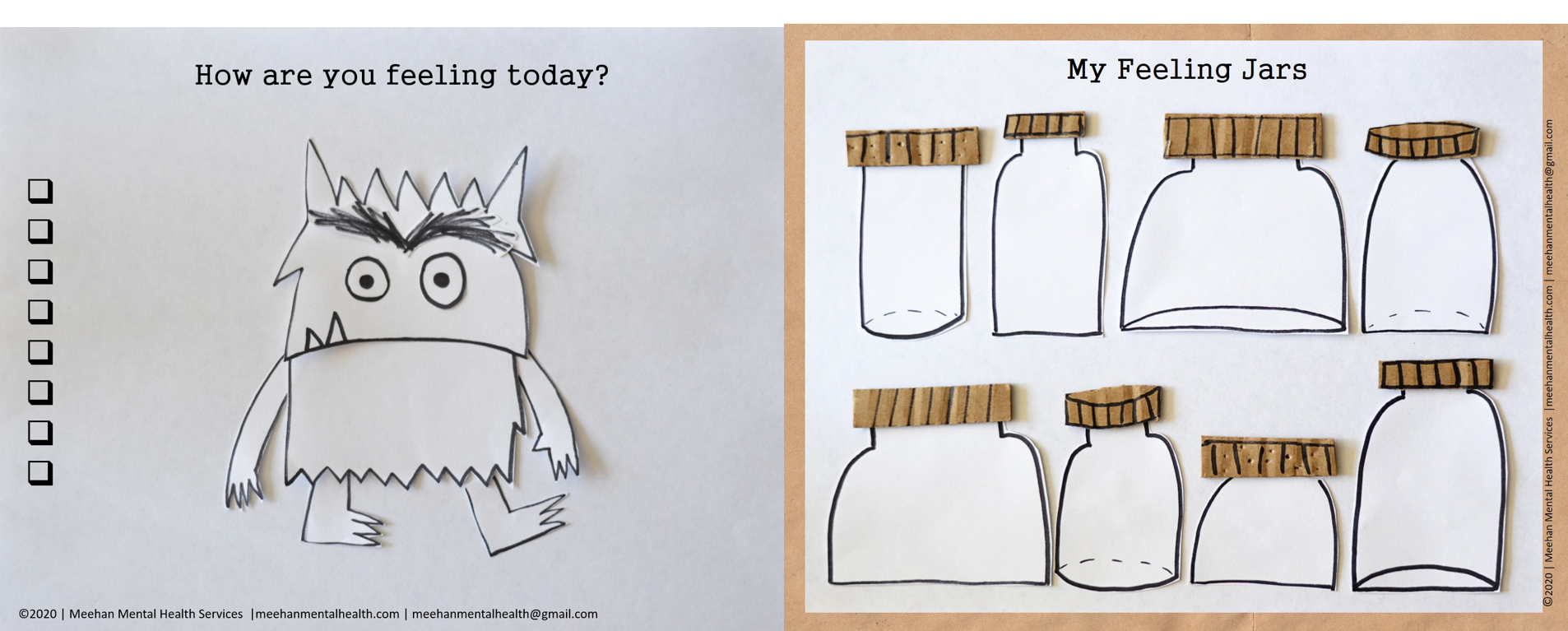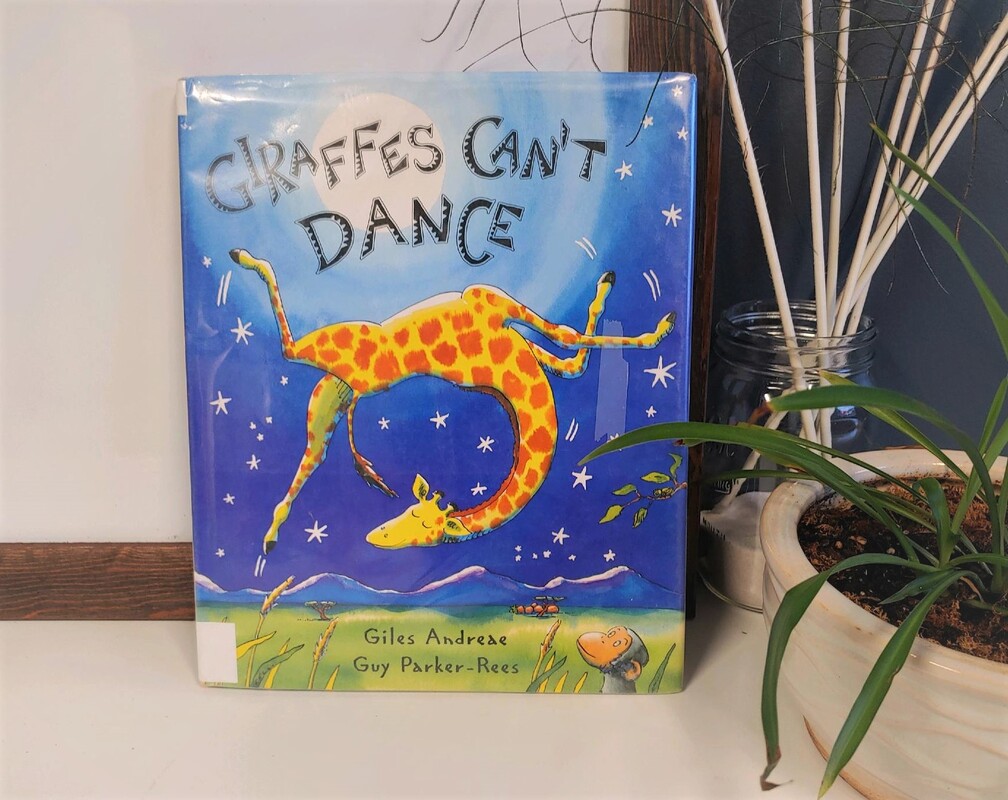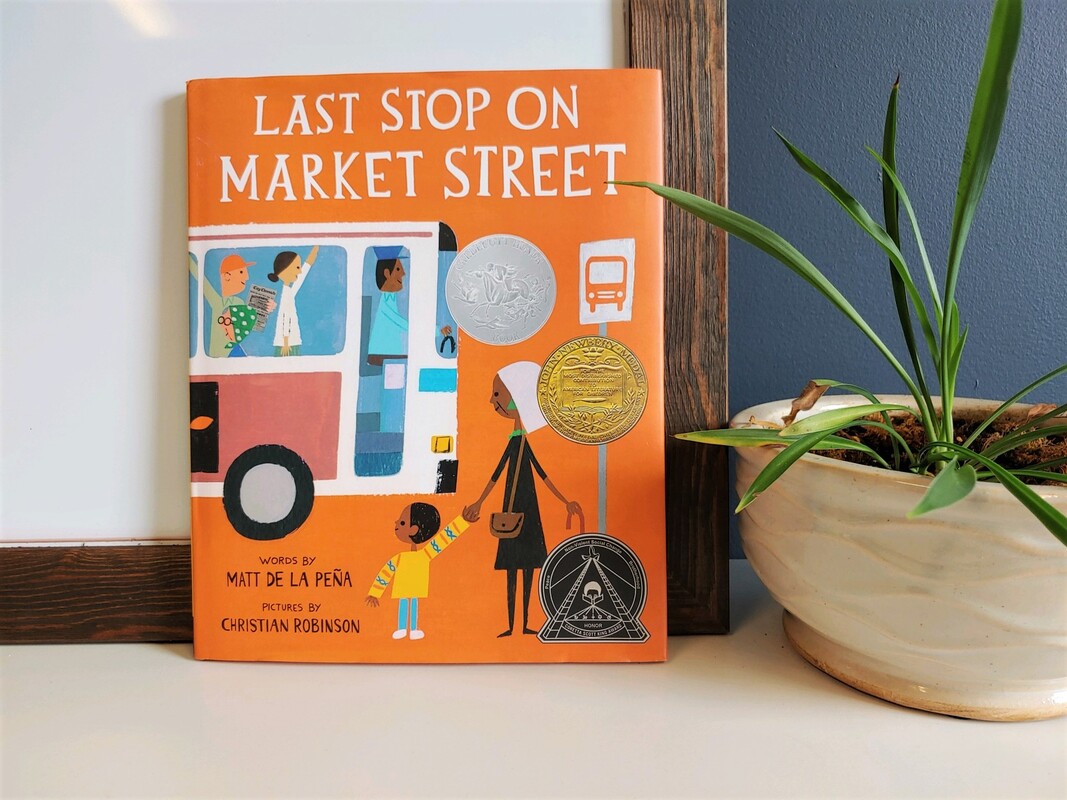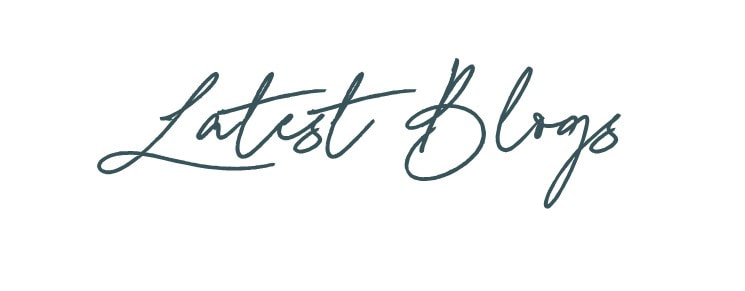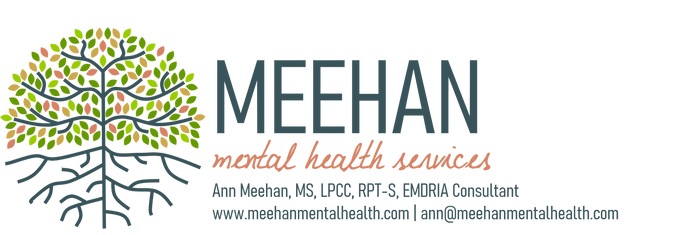|
Omu’s stew brings the whole neighborhood to her door. Thick red stew to be exact. The most delicious stew anyone has ever tasted to be more precise. The community trickles in throughout the day enticed by the most delicious smell, and each time Omu hears a knock she gives! Bowls upon bowls head out her door for the entire day. At the end of the day as Omu goes to grab a bowl for herself it’s all gone. As soon as her heart starts to sink, she hears another knock – everyone has shown back up at her home. Not to take, but to give! I have fallen in love with this story about giving, community, and togetherness. It is about the gifts that we give others, and when we need it most, how others pour into us. Oh, and the book is BEAUTIFUL too! In case you are wondering – Omu is pronounced AHH-moo and is the Igbo term for “queen”. In the story (and for the author Oge Mora) it means Grandmother. I created this FREE worksheet bundle and want to show you how I have been using it in sessions with young people! These worksheets are a great fit for Tele-Play, in office sessions, for school based services, or nearly anywhere else you may do therapy! It is great for kids to strengthen their sense of connection, self esteem, sense of contribution to others, and identify how to get needs met! So this first set can be used in SO many ways. Usually I have a client start and work from the “Filling Up Our Bowls” sheet. They label the big bowl in the middle as themselves. From here they can cut out and paste (or draw their own) bowls of people they pour into – parents, grandparents, guardians, friends, teachers, and YES even their therapists! These bowls are placed around their bowl and I encourage clients to choose color that represents the person they are pouring into. Maybe blue for their brother? OR green for their best friend? Next to each bowl coach the child to write the way they pour into this person. It could be inside the bowl, around the bowl, coming up like steam – anywhere will do! Could it be that they share their humor, compassion, tech skills, or love for sports? YES! Then using the same color as the bowl of the person they are focusing on, write with that color inside the child's bowl of how that person pours into them. With the example above, using blue, how does their brother pour into and support them? Is it by always being there to talk? Sharing? Suggesting fun things to do together? AND in green for their best friend, does that person give them compliments, help them with homework, or show compassion? Sometimes it may make sense to just work off of the “Whose Bowl Do You Fill” worksheet and identify the way the child gives to others. This can be tricky if the child only has a couple of people they believe they pour into OR has more bowls than are created. However, we are play therapists so we adapt – turn it over and create more bowls OR cut a smaller worksheet out of the larger one! This next worksheet, "Recipe of ME!" can be used in tandem or in place of the first set. Omu draws the entire community in with her delicious smelling, thick, red stew! This worksheet is used to increase self esteem and identify what draws others to the young person you are working with. For the literal children you could coach them to write words and characteristics that others like and appreciate about them. In metaphor you could have the child draw the ingredients in their version of “thick red stew”. On the outside you could create a recipe card of what each of the ingredients means – do the carrots mean kindness? Are the onions like empathy? Does the salt mean a little sass or humor? Click HERE to get the free downloadable worksheet bundle! I would SO encourage you to buy this book - it's $15.00 right now on Amazon. Prefer smaller book stores? Find a list of independent Black owned bookstores HERE! What other activities do you use to help with self esteem, connection, and relationships? Drop a comment below! PS Want to know why I am so book obsessed lately? I've been living, breathing, and playing with books getting ready for my new bibliotherapy training - check it out HERE ! Let's Connect - click here to join my email list!
0 Comments
We have a serious problem. There is a significant diversity gap in the number of books published about and by People of Color. Despite making up 38% of the population, in 2016 Black, Latinx, and Native authors combined wrote just 7% of new children’s books. In 2018 books were significantly more likely to be about animals (27%) than that featured Black/African American characters (10%), Asian Pacific Islander/Asian Pacific American (7%), Latinx (5%), or American Indian/First Nation (1%) characters. In 2015? Only 14.2% of children's books featured diverse characters. In 2017 the Cooperative Children’s Book Center breaks it down that of the 3,700 books published that year 25% of books were about People of Color and only 6% of these books had authors or illustrators who were People of Color. This highlights that although there is an increase in books that feature diverse characters, they are not being authored or illustrated by People of Color. So, what does this mean for Play Therapists? Well, I think it means that we have to be extremely intentional with how books featuring children of diverse backgrounds show up on our bookshelves in our play room. I would encourage you to take stock, right now, and evaluate what percentage of books do you own that feature diverse characters? And I’m not talking about a supporting character or diverse children in the background – actually featuring the stories and lives of Children of Color? What voices are missing from your collection? Now, get a plan! What are you going to do, what are the specific steps, to help increase the diversity in voices of not just books featuring diverse stories BUT seeking out authors and illustrators who are Black, Latinx, Asian Pacific Islander, American Indian, or First Nation? I wanted to share with you my favorite sources for diverse books to get you to “add to cart” these beautiful, wonderful, and diverse stories.
There is much work to be done – and lucky for us shopping for books is so much FUN! Let’s fill our bookshelves with these multicultural stories! Let's Connect - click here to join my email list!
Sometimes feelings get…all tangled up. This can be confusing and sometimes we need help untangling them and sorting them all out. Enter “The Color Monster” by Anna Llenas! This book is AMAZING and as I talk about here and here bibliotherapy is such a wonderful practice that is so adaptable to provide as a therapeutic approach in all sorts of settings – office, in home, at school, and of course Tele-Play! This book is a wonderful story about a “Color Monster” who is full of mixed up colors and emotions. A little girl takes the monster by the hand and gently helps the Color Monster untangle and separate out all of these feelings and put them into jars. The level of compassion in this book is SO wonderful. One of my favorite things to tell young people is that feelings aren’t good or bad – they are just our bodies way of letting us know what is going on in the world around us! For a lot of the littles (and teens too) that we work with there can be a lot of judgement that comes with anger and a portion of the therapeutic work can go towards decreasing shame about this real, normal, human emotion. This makes sense as to why my most favorite line in the book is “Sometimes, you want to take out your anger on others. But I’ll be nice to you, Color Monster, and your anger will disappear!”. My heart just melts on this page! The book also emphasizes being able to feel and honor whatever feeling comes up and tell us that it is OK to feel all of these feelings, it is okay to listen to our bodies, and it is okay to cry! So powerful, especially for young people who often get flooded and want to repress feelings. Another thing that is just fantastic about this book is the use of metaphor. It compares anger to a fire you might want to stomp out, sadness to a rainy day, and calm like leaves swaying in the wind. If you are doing any sort of metaphor work with kids this is a GREAT book to get the wheels turning! When I am reading this with young people after I will pause, ask them what they noticed, and most of the time go into a Cognitive Behavioral Play Therapy activity about feeling identification and levels! I have included a free download of these worksheets HERE! I had so much fun creating these printables and thank goodness for all the Amazon packages I have been getting lately - there was no shortage of cardboard for this project! So, after we read the book I have them select colors (up to eight - but let's be honest you could add more boxes and print a duplicate of the feelings jar page if you needed more) and color code and write in what feelings came up for them today or in the week using The Color Monster Check In download. The book identifies five feelings of happy, sad, angry, fearful, and calm, but I wanted to make sure if other feelings came up there would be space for them so I included eight. One thing to notice is how the feelings are being drawn. As opposed to a color your heart activity (where the feelings are separate) the Color Monster’s feelings can be mixed up. Are some feelings darker (like pressed down harder when drawing) and what feeling are more prevalent? Do some feelings have just one line and are there obvious feelings that are missing? Do the feelings spill out of the color monster and onto the rest of the page? These are all great things to notice and process along with how it feels in their bodies when the feelings are mixed up, any thoughts that might come up for the Color Monster, and the choices the monster may make when feeling all mixed up! Oh, it is also a fantastic externalizing technique! The next sheet is all about taking time to separate out and honor each feeling. With the My Feeling Jar worksheet you can clearly identify each feeling experienced and how much of each feeling. You can go deeper with young people and identify triggers, how they felt it in their bodies, warning signs of these feelings, and choices that might be helpful vs unhelpful to honor what is going on for them over the week. This exercise is also a great tracking technique. If you engage in this activity with clients periodically how does their Color Monster change over time? What about levels or ranges of feelings? Does their emotional literacy increase where they could initially name three feelings, but now it’s five? Now, although this activity is for younger children, teens also have tangled up emotions too! The teen version of this? This fantastic Tangled Ball of Emotions Download you can snag HERE from Sources of Strength. I have been using this drawing activity for a prompt of how teens feel currently and having them fill out a second for how they desire to feel. From that point we can spring board off into processing how to get from here to there! Here’s hoping this activity brings you and your clients some superpowers to help untangle those messy, chaotic, and confusing feelings! Want more training on how to use Bibilotherapy in your Play Therapy practice? Check out this training HERE! Let's Connect - click here to join my email list! *This post contains affiliate links, so I may earn a small commission when you make a purchase through the links on this site. The best news? It doesn’t cost you a penny! Thanks for supporting my business by shopping my favorite playroom gear and accessories! “Giraffes can’t dance you silly fool, oh Gerald you’re so weird.” I literally have this book memorized. I could recite it in my sleep – no joke. Not only because I use it all the dang time in my therapy sessions, but my son also happens to love it too! AND what’s not to like – an underdog truly coming into his own to become the BEST dancer anyone in the jungle has ever seen! Ok, let me back up a minute. You all know how much I love bibliotherapy, and if you haven’t read Giraffes Can’t Dance scoot yourself to the nearest bookstore, pop it in your Amazon cart, or to be honest you can see it right now on youtube! In this book, Gerald the giraffe learns that animals in the jungle can be unkind and downright mean, but with the help of a cricket, confident thinking, and his own special song he can do anything he puts his mind to - including dance! This book has it all – self-esteem, bullying, growth mindset, self-talk, connection and support. It is also ah-mazing for Cognitive Behavioral Play Therapy. There are so many opportunities to go through the cognitive triangle and connect thoughts, feelings, and actions. It is also filled with regulation skills and highlights Gerald’s self-talk. You can clearly see the pattern when Gerald makes statements that he is “such a clot” and how they connect with him feeling sad, giving up, and going home. Giraffes Can’t Dance also highlights the importance of helpers – a small cricket steps in and serves Gerald some serious wisdom allowing him to find his rhythm and a song that is just for him. You can see the shift in Gerald’s mood as he exclaims “I AM DANCING”! He is also incredibly gracious and doesn’t even dish out as much as an “I told you so” to any of the jungle animals – he just finishes with a bow. Gerald is one class act. My favorite companion activities for this book include a “Find Your Song” activity. You have young people identify a song that is just for them – the music they move through life to. You can play the song in session, notice what feelings and thoughts come up, or have them focus on a specific powerful self-statement. This book is also a great tool for EMDR as it helps identify feelings, thoughts, and cognitions. You can get curious about where Gerald may feel sensations in his body and what pictures may be going through his head as well as giving Gerald a Subjective Units of Distress rating. This primes young people to head into phase 3 of EMDR desensitization and reprocessing and gives them language and examples when asking about TICES. You can also use the “Find Your Song” activity if you are trained in EMDR with slow bilateral stimulation for the development of a resource. I have also developed a worksheet pack that I use with young people including a Giraffes CAN Dance growth mindset worksheet that helps young people evaluate things they thought they couldn’t do but actually could as well as things they can’t do YET! For young people who feel isolated or alone you can grab the “Who Are Your Crickets” worksheet to help them identify their community and team. I have also used this for big transitions in life such as from elementary school to middle school or out of intensive outpatient treatment into a less restrictive setting. The last worksheet in the packet, "Who Are You A Cricket To" can be used for social skills. You can help young people identify how they show up for others and encourage others. You can grab your free downloadable worksheet pack HERE! This is such an amazing book that I have used it different ways and different times with the same client. Maybe one time to talk about confidence and finding a client’s song and again for a transition time when she needed to get clear about who was on her team. I know this book is so dynamic – drop a comment with other ways you have used this book in your practice! PS - why YES that is a giant piece of tape on my book! This is one of the original books I purchased as a play therapist with a tiny budget. It came from a little website called half.com where I was used to buying some of my college text books. This copy is from the New York Library! Interested in learning more about how to use Bibliotherapy in your Play Therapy Practice? Check out this training HERE! Let's Connect - click here to join my email list! *This post contains affiliate links, so I may earn a small commission when you make a purchase through the links on this site. The best news? It doesn’t cost you a penny! Thanks for supporting The Playful Therapist Blog by shopping my favorite playroom gear and accessories! My son has exactly 5,873 books. Ok, maybe that is an overstatement BUT he does have a ton of books – like baskets upon baskets and shelves upon shelves. The first thing I went out and bought when we found out we were pregnant was an amazon cart of books. To say I am book obsessed is an understatement, and this love of books has been growing ever since I was little and had 5,873 books. I have been using bibliotherapy in my practice with children and young people nearly since day one. I cannot describe how amazing it feels when a child feels seen and heard through bibliotherapy. Some children feel like they are the only ones to have gone through something or know what it feels like to have the feelings they have. BUT children get so much comfort in the fact that if someone actually wrote a book about something AND a publishing company felt it was so important to actually make the book – then they are not alone. That look of relief that washes over their face and the shame melting away is an amazing experience both as a therapist and for the young people we work with. Bibliotherapy is the use of literature to help children cope with and process emotional and behavioral difficulties and big life changes. It is one of my favorite things to present on and I only combined my last presentation Books, Games, and Media Oh My: Broadening Your Play Therapy Toolbox because I didn’t know how many other book nerds were out there and would be interested in a whole 6 hours of bibliotherapy. Drop a comment below if you are also a fellow book nerd with your favorite book to use in the playroom! Books are SO magical because they engage and capture the three portals of learning – visual, auditory, and tactile and kinesthetic. The last portal is especially engaged when bibliotherapy is combined with other directive play therapy techniques and research actually shows that bibliotherapy increases with effectiveness when paired with another directive technique. The amazing thing about bibliotherapy is it can fit into most theories of play therapy depending on how you are using it. For those that practice Child Centered Play Therapy it fits into a play therapy session when a child spontaneously takes a book from the shelf and begins to explore. Some may read as a mother character or when playing the role of teacher. For more directive approaches liked Cognitive Behavioral Play Therapy the therapist can introduce the book and the directive activity based on the child’s goals – maybe for emotional identification, shifts in maladaptive cognitions, or identifying adaptive behaviors or coping skills. Being a mom and a play therapist is an incredibly interesting season as sometimes the play I do in office with clients spills over an informs the play I do at home. I mean, I have all categories of Dr. Gary Landreth’s toys present in my son's toy collection AND a sand tray in my living room. However, I am finding more and more that my play at home is informing my therapy practice. There are new toys, books, and games that I finding that I just NEED to by a second one for the office. The book Last Stop on Market Street by Matt de la Pena is one of those times. To say this book is amazing is an understatement. It is beautifully and vibrantly illustrated, has a wonderful message on gratitude, and has won a slew of awards. One the first page we meet CJ, a curious young boy who is wanting what others have. As he and his grandmother catch the bus across town after church to volunteer at the soup kitchen CJ is wondering – why doesn’t he have a car? How come he doesn’t have headphones like the teenage boys? How come he has to go volunteer? His grandmother shows kindness and gratitude on every page. She is able to find the little miracles in the every day. After the 500th time of reading this book (because that’s what kids like to do) I had a lightbulb moment that this was ABSOLUTELY a therapy book. The ways to help young people see the miracles and magic in the everyday is endless. This book is wonderful for those that struggle to see the good or positive, are often angry or irritated, have a sad or down mood, or are just chronic complainers! Research shows us that gratitude, the act of showing thanks and appreciation, is linked to improvement in mood, can actually change your brain, and releases the feel good chemicals of dopamine and serotonin! The book on its own is amazing and for some who practice reactive bibliotherapy that is where this activity ends. I am a huge fan of interactive bibliotherapy where you pair the book with some sort of creative activity – and let me tell you – the sky is the limit. You could go together (with all the necessary permissions of course) on a gratitude walk during the session, naming things on the way you are grateful for. Even in your office think about all the wonderful things you could see on the way from your office to the waiting room – electricity, heat (especially important to Minnesotans with subzero temperatures), art, the internet, indoor plumbing, the ability to be mobile, and the list could go on! You could assign the child homework to do a gratitude walk alone or with parents OR one of my favorite assignments for families is developing a ritual of sharing of gratitude on a daily basis before bed, at dinner, or in a gratitude journal. Sometimes I bring this technique into the therapy session because I find parents are often times so busy putting out fires that in a moment of peace they just want to relax and take a breath! For some young people I end my parent check in portion with the parent looking at the child and telling them all the things they are grateful for their child over the week. It can be anything from loving the child’s sense of humor, when a sibling instigated the child and he/she walked away, or enjoying an activity done together. I call these “ushy-gushy” moments because it is so darn COOL to see this outpouring of love that often times we don’t stop to do. The book creates a nice springing off point to talk about WHO in the child’s life they are grateful for and HOW they could show that person/people they appreciate them. This could mean drawing a picture or making a collage of what they are grateful for. You could focus on the toughest part of their day and find the good parts to pull out. I also often have children in my office that want to make a card/art for a parent, teacher, sibling or friend. Other times it can be a thank you card – sent or kept private – that the child writes to someone special in their life OR to someone they struggle to find the good in. Questions I found helpful to process this book:
Now lastly, I want to share one of my favorite bibliotherapy secrets – almost all books you can find on YouTube! I prefer having book in hand reading in real time, HOWEVER if you don’t have the budget, don’t know if a book will fit will into your practice, or dang it you forgot to put it in your amazon cart and the client you want to do this with is on your schedule today – watching a video of the book together can be wonderful. What are your favorite ways to cultivate gratitude in session with clients? I would love to hear what goes on in your play room! Want more training on how to use Bibliotherapy in your Play Therapy practice? Check out this training HERE! Let's Connect - click here to join my email list! *This post contains affiliate links, so I may earn a small commission when you make a purchase through the links on this site. The best news? It doesn’t cost you a penny! Thanks for supporting my business by shopping my favorite playroom gear and accessories! |
Hi, there!I'm Ann Meehan, an LPCC, Loading... Archives
July 2024
Categories
All
|
Privacy Policies | Terms of Use | Disclaimer
Contact
[email protected] | Copyright Meehan Mental Health Services 2022
Contact
[email protected] | Copyright Meehan Mental Health Services 2022

